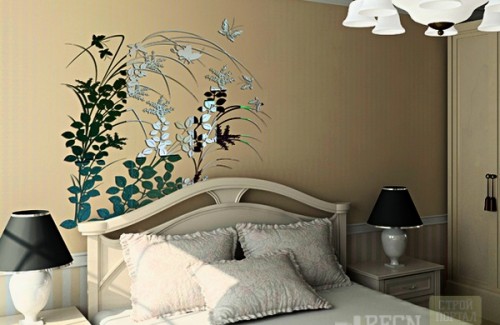
Self-adhesive film: characteristics, types, use Wallpaper
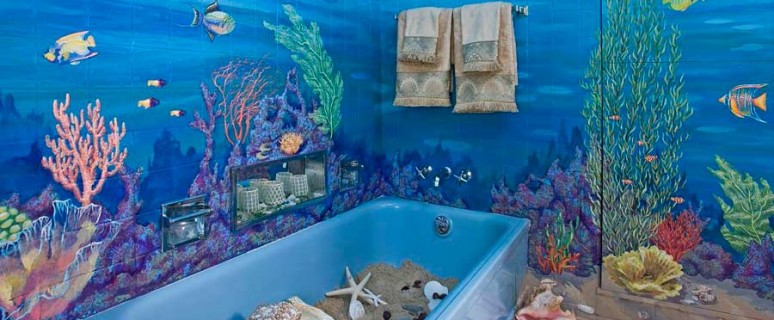
Not everyone can afford expensive decorative materials to create an attractive interior. Modern technical developments from different manufacturers make it possible to solve the tasks of any complexity and create a very interesting aesthetic effect in the budget version. The championship in this respect is occupied by a vinyl self-adhesive film presented on the market with a huge variety.
Content
Principles of classification
Given the wide species row and equally universal applications, self-adhesive films are classified across several features to which it is worth paying attention to the acquisition of this material. 
These include:
- structure;
- basic material;
- surface type;
- appointment;
- decorative design.
Important! The price for a self-adhesive film is very democratic, so any person may afford its acquisition, regardless of its financial profitability. Deviations in the cost will be insignificant for different species, to a greater extent they are regulated by the fame of the brand producer.
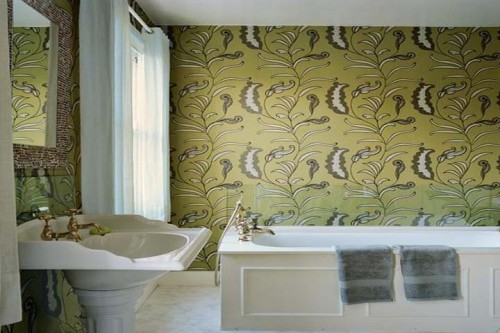
Types of film based on material
All materials of this category are combined compositions. As the main substance used:
- polyester;
- polyvinyl chloride;
- propylene.
Important! In addition to basic substances, the optimal combination of plasticizers, stabilizers, pigments is selected. Also used paper, natural and synthetic fabrics.
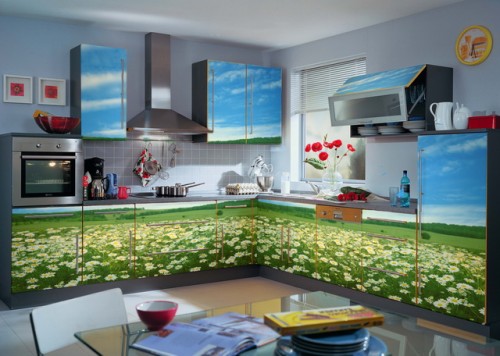
Types of self-adhesive film
Depending on the structure of the canvas, self-adhesive films are distinguished:
- Single-layer. Such material is made of multicomponent mixtures, which include PVC resin and various plasticizers. Also, stabilizers and pigments are also used as additional substances to impart the strength and desired design of the surface. All substances are mixed in a homogeneous mass, after which it is formed into the film by extrusion or heat treatment with hot rollers. The rigidity of the film and its physico-chemical properties are directly dependent on the type of plasticizers added.
- Two-layer. For the production of 2x layer coatings, 2 separate canvases are manufactured - the basis and cover. For the base, the fabric either paper is most often taken, and for the coating layer - a polyvinyl chloride resin of a different combination of substances. For the manufacture, methods of calender molding, apparent, extrusion, and even caching are used. As a result of the work done, more plastic canvas are obtained, which provides greater convenience of applying them, but their specifications are somewhat lower than that of a single-layer film.
Important! Given the features of the structure before buying a self-adhesive film, be sure to clearly define its targeted use. The duration of its operation depends on the correctness of the choice.
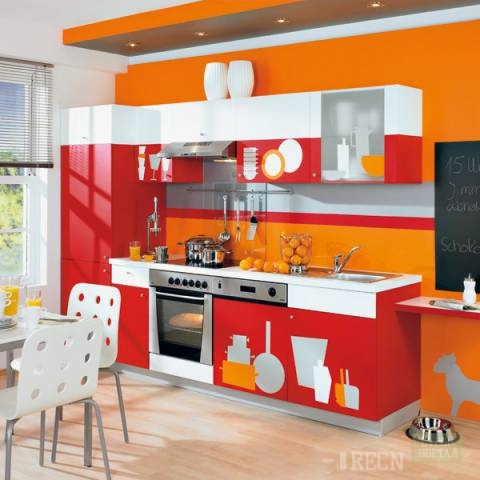
By type of surface
From the quality and type of surface, the attractiveness of the decorated surface and its appropriate combination with the rest of the interior or exterior is directly dependent. According to this principle, the following types are distinguished:
- glossy - suitable for darkened rooms;
- matte - perfectly fits into the interior of the room with good illumination;
- mirror - appropriate in any premises, including in small;
- transparent - used mainly for decoration of glass surfaces;
- holographic - suitable for any surfaces to create an original effect.
Important! Depending on the correctness of the selection of the type of surface, the effectiveness of the result in the process of decorating is completely dependent. Therefore, adhere to the recommendations of the specialists so that your designer idea in the theory is fully complied with the idea of \u200b\u200bthe idea.
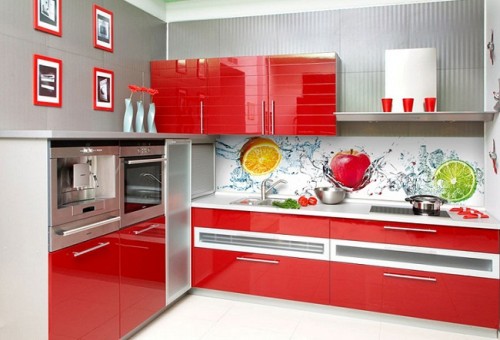
Decorative opportunities
The modern market provides a unthinkable wide species series of self-adhesive canvases for finishing different surfaces. Almost every manufacturer can find up to 1000 items, calfs and texture options. This allows you to most accurately select the desired coating to solve a specific task. 
Conditionally all self-adhesive films are divided into 2 versions.
Standard - present in a monophonic version of a wide range of color palette, and also includes such types of imitation:
- veneer of valuable wood wood;
- natural and processed stone;
- ceramic tile;
- canvas;
- the cloth;
- tapestry;
- children's scenes.
Important! Self-adhesive film can be like monophonic and consist of the most winning combination of shades.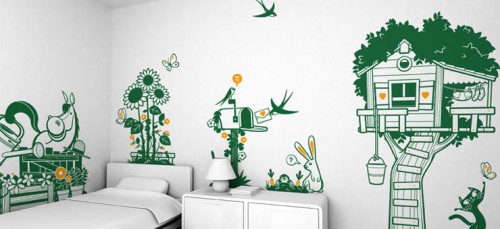
The material of the special purpose category or "special execution" are presented as coatings:
- under velor;
- imitation of cork cloth;
- metallic, gold, silver;
- thickened films for furniture, countertops, window sills.
Important! In this group, a special material for drawing can be separated separately, which allows you to repeatedly apply drawings and remove them while maintaining the integrity of the surface.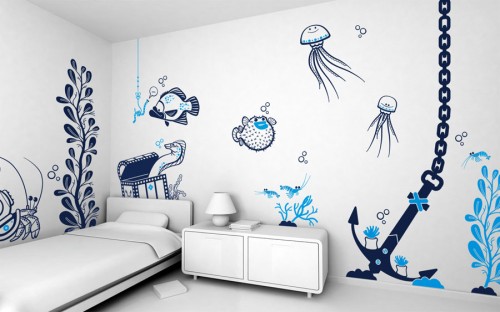
Application of self-adhesive film
This material is widely used to create a variety of advertising, both internal and outdoor. In construction and design, the use of self-adhesive film is even wider. It covers literally all directions and makes the finish of almost any items.
The most frequent ways of its use are:
- Self-adhesive film for the bathroom. Here it becomes suitable for wall decoration, as the material is moisture-resistant and perfectly prevents the formation of mold. Moreover, if you use a mirror cloth, it will help visually expand the space, and the holographic will bring extraordinary originality.
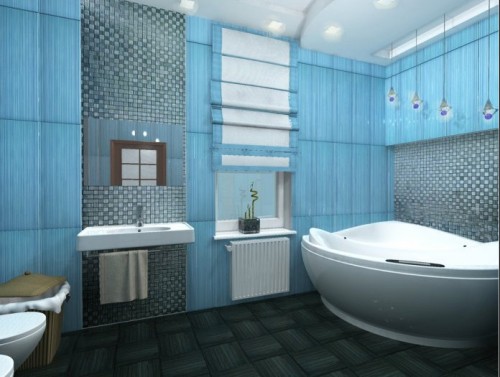
- Self-adhesive film for furniture. In this regard, the scope for fantasy is inexhaustible. Using such a coating, you can give the solidity of the room by reagreeing it under the finishing of natural wood or stone. For a more modern style, a film with a fabric imitation is suitable. The film under velor will bring a special comfort, and the golden, silver or "under metallic" perfectly fit into the High-tech. At the same time, it is possible to pick up, as a fully appropriate color of the natural texture of the material of the new furniture, and return to the former appeal to the Old, renovating it.

- Film for working surfaces in the kitchen or in the office. Permanent load and contact with sharp objects can lead to a rapid failure of the main surface. When tightening it with film, it will be possible to avoid rapid damage, which is noticed by its undeniable profitability.
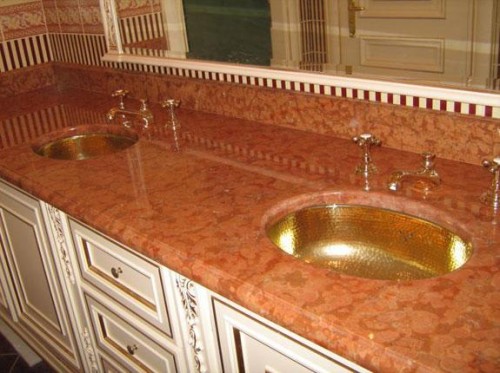
- Film for the children's room. Such material can be used as the creation of a decorative coverage of walls with thematic patterns, which from time to time can be changed under new hobbies of the child. In addition, a special film type "School board" will allow not to limit the child in his desire to draw everywhere without prejudice to the interior.
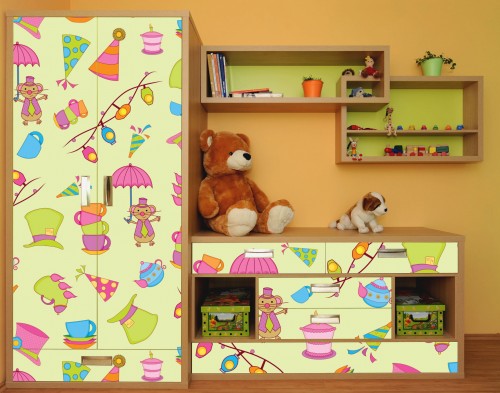
- Film for doors. This direction can also be noted a certain profitability. The coating will not only protect the door leaf itself from the formation of scratches and cracks. It will provide additional moisture protection, which is especially important for wood doors, and accordingly, prevents their deformation. At the same time, it is possible to pick up the shade as accurately as possible, which will be perfectly combined with the rest of the color gamut of the room.
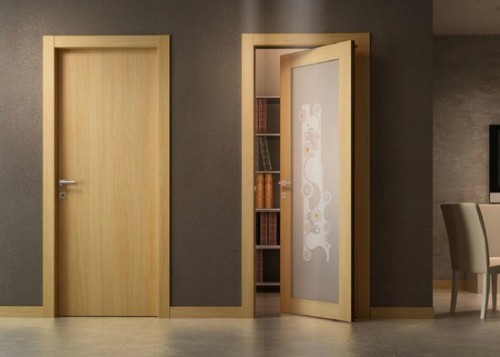
- Self-adhesive film for windows. Such a coating is mainly used to protect against exposure to direct sunbathing rays into the room. Most often for this purpose, the canvas of varying degrees of tinting are selected. Practical use is a film and to protect the windowsill from crumbling painting or other finishes, and accordingly, the risk of the need for frequent restoration is reduced, and as a result, additional costs are reduced.
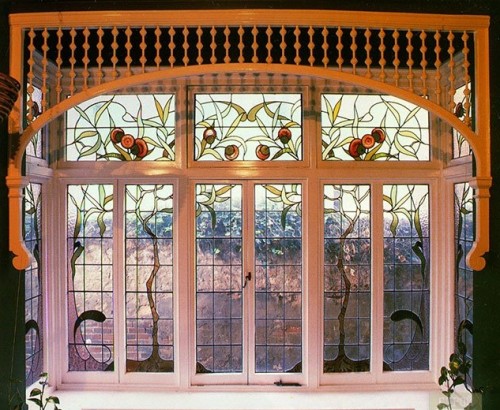
- Film for glass surfaces. Registration with such material will allow them to give them greater impact resistance, and accordingly protect against chips or complete destruction. For door inserts and countertops, use a stained-up self-adhesive film. This canvas can be used as separate fragments to create extraordinarily attractive patterns on the surface according to an individual project, and fully arrange the surface with multi-colored stained glass windows, which is very relevant among connoisseurs of fashion trends.
Important! Visually imagine all the possibilities of using this universal PVC material will help photo interior design with self-adhesive film.
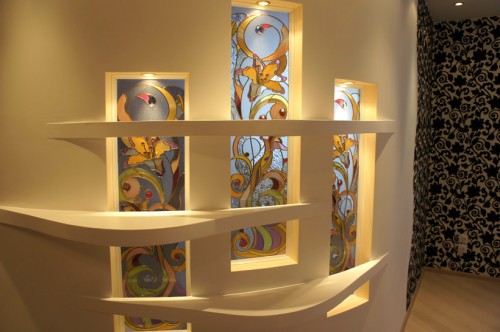
Parameters of self-adhesive film
Self-adhesive PVC film is supplied to the market not only in a wide range of decorative design. No less attention on the practicality of its use deserve forms of release. Basically, such a film is sold in rolls with a length of 15 meters, and the width is variable. This allows you to choose the material so that it is most practical to use it without waste. For example:
- for walls, doors and other surfaces of a large area, rolls with a width of 900 mm are suitable;
- when furniture restoration or the creation of a protective coating for it, take the material with a width of 450 or 675 mm;
- when finishing small surfaces or to create single ornamental elements, manufacturers offer modifications of rolls with a width of 53 and 106 mm.
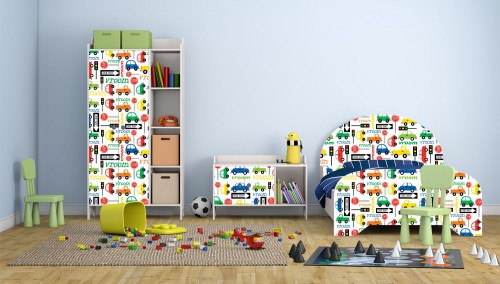
How to glue a self-adhesive film?
Naturally, considering the possibility of applying such a material, it will not be superfluous and the fact that it is extremely simple to apply it on any surface. For such work, you will not need to attract specialists, so you can fully spend the flow of your artistic thought. 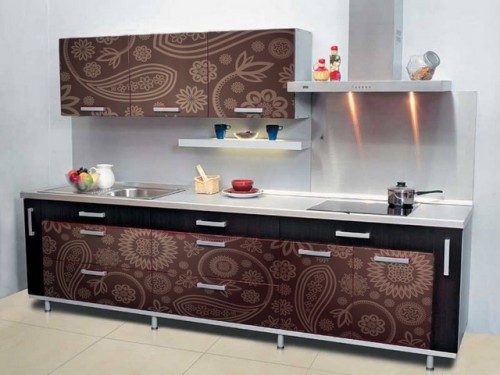
To stick the film, do the following:
- Prepare the surface by clearing it from dust, dirt, fat.
- Cut the material with strips or figured elements of the desired size.
- Remove the bottom protective layer successively and gently roll off the film on the surface, slightly pulling.
Important! Review the proposed video below to clearly understand how to glue the self-adhesive film.
So that the result obtained is high-quality, also familiarize yourself with some recommendations for each process:
- For degreasing and removing contaminants from the surface, use a solution of water and detergent for dishes when processing glass surfaces.
- If you decorate the wooden surfaces without varnishing, before applying the film, drive the basis.
- By gluing the film, carefully smooth the surface to prevent the formation of fuses with air inside.
- When finishing walls, additionally use glue for wallpaper to increase adhesion and fix the self-adhesive film for a long time.
- If there is a need for pasting round corners, preheat the canvas with a hairdryer to make it more plastic.

Conclusion
As you have already seen, self-adhesive film is a really very practical solution for solving any designer ideas and creating protection for any interior items. In addition to the fact that it is universal, it is easy to highlight a few more advantages:
- resistance to any aggressive environmental impact;
- long period of operation;
- wide color reproduction capabilities;
- excellent adhesion with any type of foundation;
- beautiful moisture resistance.




